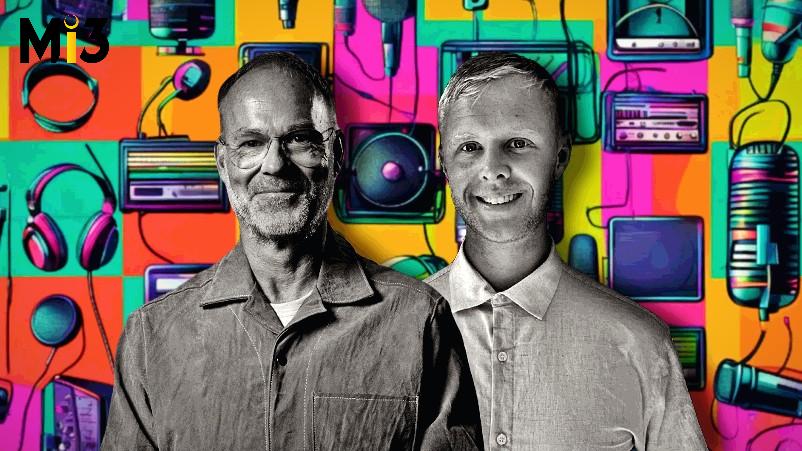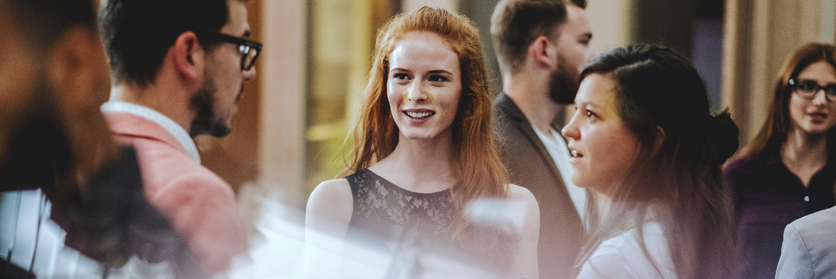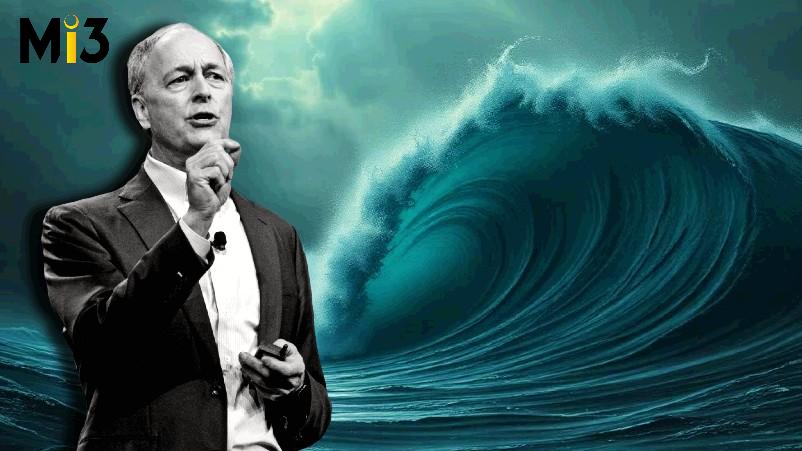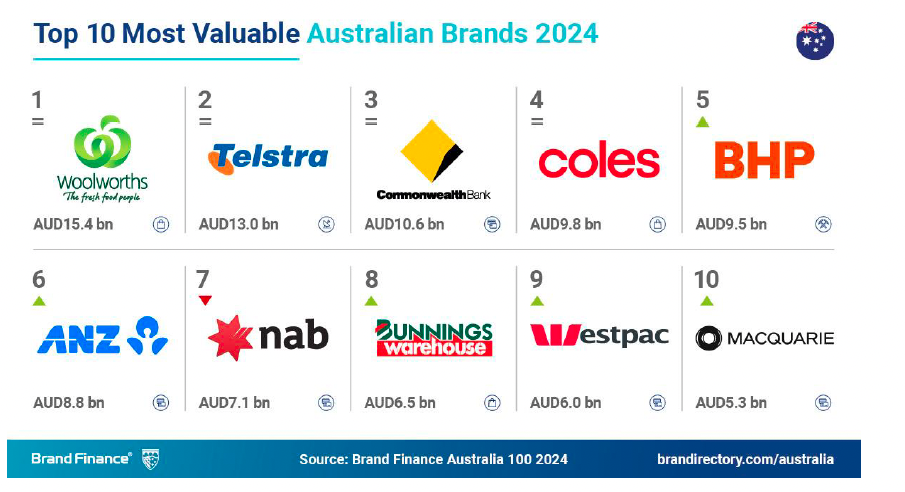EarMax Media founders claim ‘scattergun’ media plans and ‘lowest common denominator’ creative give podcasts a bad rap; agencies and publishers fall short on ‘due diligence’

What you need to know
- Audio industry stalwart Ralph van Dijk has partnered with Andy Maxwell to launch specialist podcast media agency, EarMax Media.
- Promising to tackle lack-lustre podcast advertising right from the media plan, the duo have taken a swipe at the scattergun approach of the big media agencies and publishers, which they say turns off listeners and advertisers alike.
- It’s made for a gap in audience and ad spend, with podcast advertising still struggling for a solid share of the digital audio pie.
- Maxwell says even publishers themselves have played into the problem, with network salespeople often lacking a deep understanding of what it is they’re selling, “never mind a 26-year-old account manager at a media agency where the audio spend is less than the rest of their big campaign”.
- Together with sister agency Eardrum, EarMax is aiming to drive meaningful connections with listeners, tapping into the nuances of the podcast channel – and it won’t be offering programmatic.
- Generative AI might just be the next challenge on the horizon, with artificial voice closing in on work of human talent. But van Dijk isn’t worried just yet. He reckons it’ll be quite some time before AI can match the authenticity of the human voice.
I'm moved by music and sound and characters and voice, and I just got so pissed off with the crap that I was being served and it was ruining my experience as a listener. So maybe hate is what drove us [to launch EarMax].
Ralph van Dijk is something of a stalwart of the Australian audio industry. Since opening the doors to his specialist radio creative agency Eardrum in 1990, he’s been a loud advocate of radio advertising and the powers of sonic branding.
But three decades on, the evolution of digital audio, along with mass podcast consumption and the rise of programmatic, have muddied the waters and great creative alone can’t level with the nuances of the medium.
So, van Dijk has turned his gaze to media buying, specifically, podcast media buying. Together with co-founder Andy Maxwell – who spent much of the last decade learning the ropes of the podcast buy in the UK – he’s set up EarMax Media.
Soft-launched in January before going all-in last month, the agency promises to maximise the impact of podcast spend via channel-specific media buying services – and the co-founders claim it’s the only shop doing so in this market.
“I love audio. I’m moved by music and sound and characters and voice, and I just got so pissed off with the crap that I was being served and it was ruining my experience as a listener,” van Dijk tells Mi3 of the move. “So maybe hate is what drove us.”
The sister agency to Eardrum, EarMax completes the end-to-end podcast puzzle for advertisers looking to take the medium seriously. The two firms will operate hand-in-glove, as well as independently, and can plug in with the broader agency village where clients see fit.
What EarMax won’t do is programmatic – van Dijk and Maxwell reckon that’s where podcast advertising starts to fall apart. Instead, they’re trading direct with publishers like Spotify, Acast, and all the biggest local networks, along with smaller publishers and indie podcasters that might otherwise be overlooked.
You have an environment where you can get up close and personal with the world's smartest thinkers, most influential journalists and entertaining storytellers, and then you kick the listener in the teeth with a script written by what I assume is a high school student and voiced by a telesales person.
Lost opportunity
Australia is a global leader in podcast listenership. Nearly half (48 per cent) of the population 12 years and older listened to a podcast in the last month, per this year’s Infinite Dial study from Edison Research and Australia’s peak commercial audio body Commercial Radio and Audio (CRA). That puts us one point above the US.
But ad dollars still aren’t stacking up. Podcast advertising only accounted for 37 per cent of the market’s $265.8 million online audio advertising spend in 2023, and according to IAB Australia’s Audio Advertising State of the Nation report, buyers’ holdups with measurement and effectiveness has kept growth at bay.
Maxwell suggests the issue is more to do with the fact traditional media buyers aren’t treating the channel with the “time and due diligence” it deserves. That means they’re failing grasp the core opportunity of podcasts – “to target audiences based on their interests and their passions”, per van Dijk. He says if engagement is podcast’s superpower, “scattergun media plans and grating lowest common denominator creative” is its kryptonite.
Avoiding the latter is all the more important given podcast is still an emerging channel. First impressions matter and even one bad experience is enough to wards advertisers off. Cue claims that podcast “didn’t work for us”, as several brands have told van Dijk in recent weeks.
“We look at what they’ve been given, either as media plan or creative and go, ‘well it’s no wonder this didn’t work’. The medium is not broken, it’s the way you’ve used it,” he says.
For Maxwell, the lack-lustre standards across podcast media strategies were crystalised during a stint at a London-based podcast consultancy.
“What I found when I was doing the promotion strategies is that I myself was very time poor, and we tended to get the same kind of podcast plans regurgitated depending on what industry that brand was in,” he says. “Little time and effort was given to the podcast advertising part specifically, but it still got signed off, and I felt like people didn’t really understand what they were buying.”
The result is irrelevant and sometimes jarring ad placements that do few favours for the client or the podcast. It’s wasteful at best and damaging at worst, the pair say.
Maxwell recalls hearing an ad for a menopause service upwards of 40 times during a binge of the Short History Of podcast. He happens to know the series’ audience is 85 per cent male.
For van Dijk, the lack of care misses the point of the podcast medium entirely. “You have an environment where you can get up close and personal with the world’s smartest thinkers, most influential journalists and entertaining storytellers, and then you kick the listener in the teeth with a script written by what I assume is a high school student and voiced by a telesales person,” he laments.
While that ad might be bad in any audio platform, he says “it’s actively resented” by the listener in the podcast environment.
When you ask certain questions that someone selling podcast advertising should know, about impressions or about post roll, or about tracking and measurement…often they have to go ‘Oh I just need to check with ad ops’…This is people working for the networks selling advertising, never mind a 26-year-old account manager at a media agency where the audio spend is less than the rest of their big campaign.
Knowledge gap
The problem for podcasting is the advertising industry still treats it as an afterthought, and often, it begins with the publishers themselves.
“When you ask certain questions that someone selling podcast advertising should know, about impressions or about post roll, or about tracking and measurement…often they have to go ‘Oh I just need to check with ad ops’,” says Maxwell. “This is people working for the networks selling advertising, never mind a 26-year-old account manager at a media agency where the audio spend is less than the rest of their big campaign.”
Ultimately, Maxwell and van Dijk reckon that comes down to a lack of understanding, which calls for greater industry education around the ins and outs of the podcast medium. Getting everyone “singing from the same hymn sheet” when it comes to measurement would go a long way as well.
The Triton Digital ranker – backed by CRA and Australia’s commercial audio networks – goes some way to giving buyers what they need. Though Maxwell says IP address and geolocation tracking offer more granular insights for campaigns shooting beyond mass reach. “It really needs to be judged on a campaign-by-campaign basis”.
But what’s really letting things down are broad-stroke media buys that tap quantity over quality. For example, Maxwell says a brand who’s looking to reach a business audience is typically sold a CPM for the business and finance category.
“You’ll get promised, let’s say, 750,000 impressions within that…There might be 20-25, podcasts in there, and if you do go through [the list], you’ll find actually 50 per cent are completely irrelevant to what you’re trying to achieve, and maybe four or five of those 20 podcasts will take up the majority of the impressions.”
Of course, it’s easier for a network to sell in bulk, and if a brand or agency is time poor, they’re likely to tick the box. But it misses the opportunity to go beyond “just demographics and audience segments and actually think about the content”.
“When people can understand that and really take the time, that’s where the impact will be so much higher,” adds Maxwell.
It’s not just about getting the media piece right: planning goes hand-in-hand with great creative, and as such, van Dijk urges brands not to “dabble” with either.
“Whether [the ads are] recorded or host-read, know where they’re ending up, and know the context… It’s such a powerful medium but you need to do it properly and treat it with respect and treat the listener with respect.
“The brands we’ve worked with have become now podcast or audio fans and are now approaching that medium with so much more confidence, they are finding budgets that didn’t exist before, because now they know it works. We’re measuring and tracking it and showing the results.”
AI dystopia
While the sky looks blue for van Dijk and Maxwell’s latest venture, there are dark clouds looming in the shape of generative AI. The potential impact of the new tech on the creative sector have elicited both fear and fanfare from different corners of the industry. But it’s application for audio – and voice over specifically – could spell danger for those in the business of production.
Will AI bots replace voice actors, or podcast hosts even? It’s already happening in some cases, but for now van Dijk is not worried about what that might mean for Eardrum.
“There are ads out there they shouldn’t be spending money on. So, if you can get a free bad ad, that’s way better than paying a lot of money for a bad ad,” he laughs.
More seriously, he says while the tech is “amazing”, AI-generated speech – like most AI alternatives – will mostly be used in the low-touch, transactional end of the market such on-hold messages, in-store radio, train announcements. Basically “any context where emotion, authenticity and subtle nuances are not important”.
“The thing I think sort of reassures me is our ears are the most powerful bullshit detector we have… so I believe that one of the last environments AI will perfect is that authentic, meaningful, one-to-one voice communication.”
But that could change as the tech improves, and if it gets to the point where he can type in something and have AI speak it out in “absolutely the perfect intonation and performance level that I want”, van Dijk says it’s inevitable he’ll have to embrace it. But he thinks that is still a “long way off”.





